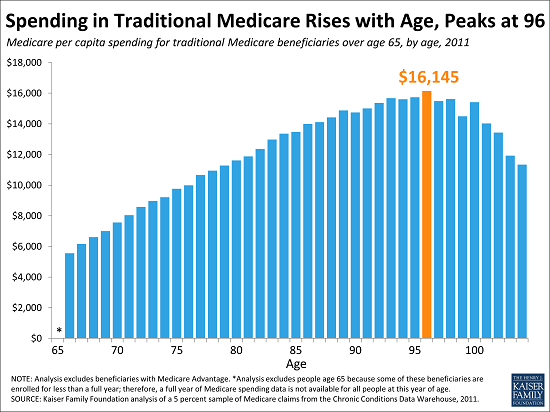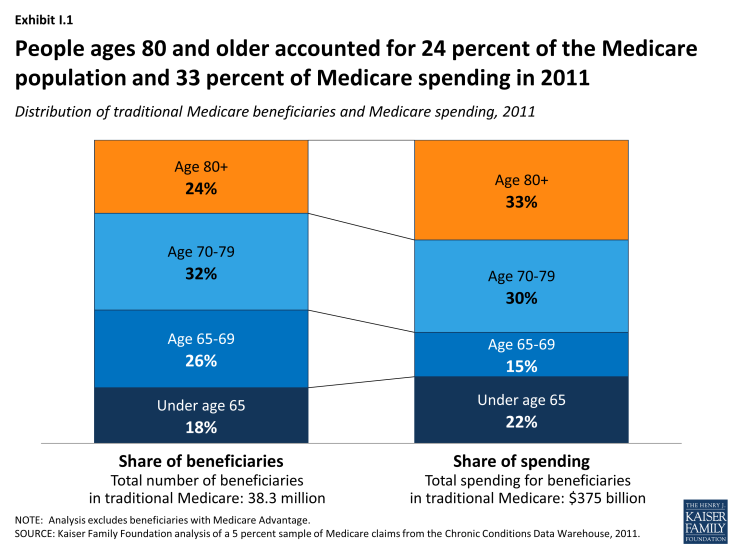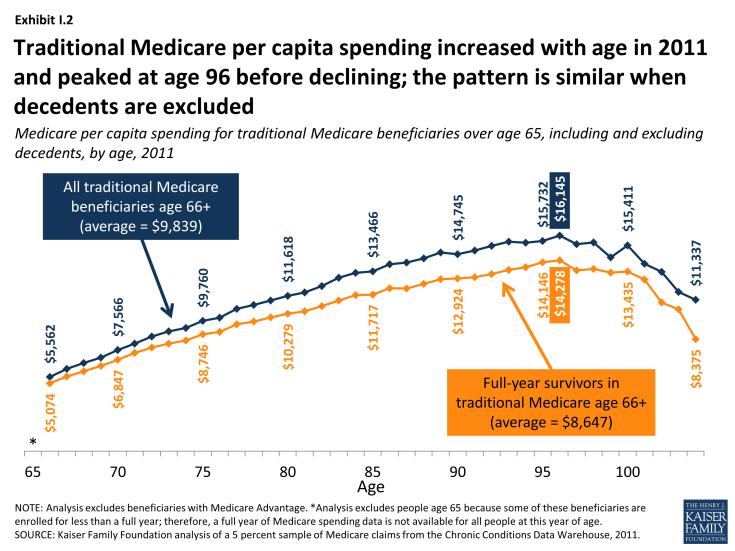Home Health Care Policies- The Kaiser Family Foundation has published some highly informative reports regarding health care spending lately. This week KFF released a report outlining the cost of living longer and an analysis of year-by-year spending for elderly patients. More specifically, the report analyzes the per-person spending of Medicare benefits based on age.

According to the report’s introduction, “This analysis examines the relationship between Medicare per person spending and advancing age, providing new data to inform ongoing federal budget discussions and efforts to improve care for an aging population. Medicare beneficiaries age 80 and older account for a disproportionate share of Medicare spending and are expected to triple as a share of the 65+ population by 2050.”
The report published several key findings, some of which included:
- Medicare per capita spending for seniors rises with age, as expected, but does not peak until age 96— more than doubling between the ages of 70 and 96, from $7,566 to $16,145 — before declining for the small number of beneficiaries living into their late 90s and beyond.
- The age at which Medicare per capita spending peaks has increased over time, rising from age 92 in 2000 to age 96 in 2011.
- The increase in spending by age is not entirely explained by end of life care; in fact, average Medicare spending per person for beneficiaries in traditional Medicare who died during 2011 declined with age, from about $43,000 among 70-year-olds to $20,000 among 100-year-olds.
- Spending on inpatient hospital care, the largest component of per capita Medicare costs, rises with age and begins to decline only when beneficiaries reach their mid-to-late 90s. At the same time, skilled nursing facility and hospice per capita spending increases dramatically for beneficiaries in their late 80s and 90s. These findings raise questions as to whether the very oldest people on Medicare are receiving the appropriate mix of services and in the most appropriate setting.

- Medicare’s octogenarians, nonagenarians, and centenarians account for a disproportionate share of Medicare spending. In 2011, beneficiaries ages 80 and older comprised 24 percent of the traditional Medicare population, but 33 percent of total Medicare spending on this population (Exhibit I.1). In contrast, beneficiaries between the ages of 65 and 69 comprised 26 percent of the traditional Medicare population, but just 15 percent of total Medicare spending.

- In 2011, overall Medicare per capita spending increased with age, peaked at age 96, and then declined gradually for the relatively small number of beneficiaries at older ages (Exhibit I.2). Average Medicare per capita spending in 2011 more than doubled between age 70 ($7,566) and age 96 ($16,145).
To view the full report, click here.




